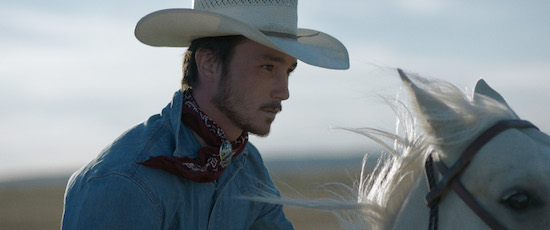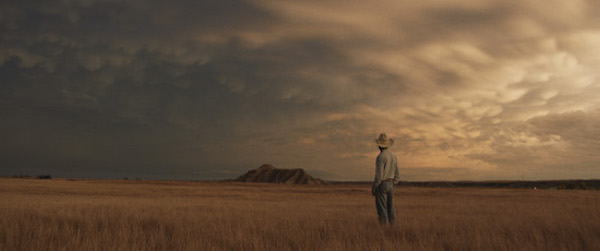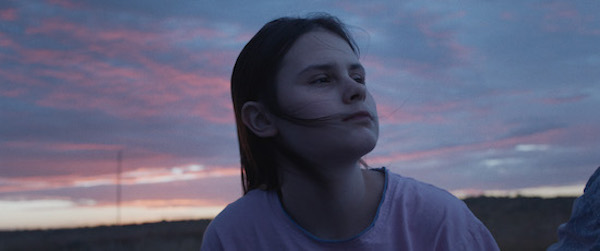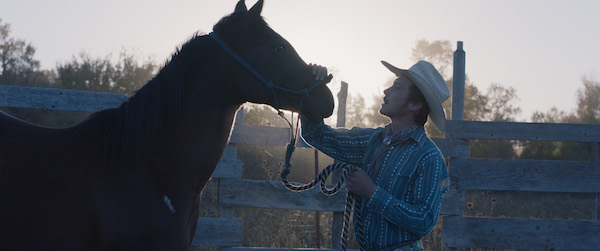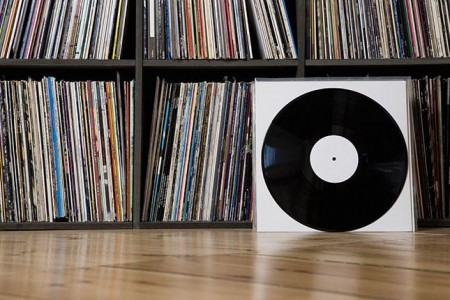The Rider: A Cowboy’s Struggle to Regain Himself
The story of how Chloé Zhao’s The Rider came to be is as intriguing as the movie itself. While filming her first feature, Songs My Brothers Taught Me, on the Pine Ridge Indian Reservation in South Dakota, Zhao befriended some of its Oglala Lakota residents. Born and raised on the reservation, they are both Native American and genuine cowboys, as pure a distillation (and contradiction) of Americana as exists.
One charismatic young cowboy, Brady Jandreau, a horse trainer and rising rodeo star, particularly impressed Zhao. She wanted to feature him in her next film, but couldn’t think of a story line. In April 2016, fate tragically intervened when Jandreau was thrown off his horse while competing in a rodeo in Fargo, North Dakota. The horse nearly crushed his skull, necessitating surgery and a metal plate, followed by extensive rehab. When Zhao learned that Jandreau was back training horses just weeks after his accident, she knew she had her movie. Essentially a docu-drama, The Rider is an authentic and poetic film about a young man struggling to hold on to his identity.
The film has an immediate sense of place, as Zhao makes good use of Pine Ridge and the gorgeous, wide-open South Dakota prairie. Adding to the movie’s authenticity is the cast, all playing versions of themselves. Aside from Jandreau himself (here named Brady Blackburn), his father Tim and sister Lilly have starring roles, as does former rodeo champ Lane Scott, shown recuperating from his own career-ending brain injury.
Brady, whose wiry frame, quiet demeanor and rugged good looks recall classic depictions of cowboys (with eyes and cheekbones that are pure Lakota), is shown recovering from his accident, both physically and emotionally. As friends and neighbors repeatedly pressure him to get back to riding, he tries to follow doctor’s orders to rest and stay off horses, at one point getting a job in a local supermarket. With even his father, a hard-drinking and gambling sort, teasing him about his diminished physical prowess, Brady finds comfort in his close relationship with Lilly, whose autism only enriches her droll, no-nonsense personality. Affectionate scenes between the siblings are some of the film’s lightest moments.
Though he still suffers effects of his injury, Brady badly misses the rodeo, portrayed as a wildly exciting environment, with competing cowboys its virtual rockstars. (Those of Native American descent wear feathers in their cowboy hats.) The dangers of bronc riding are just part of the allure, as one of Brady’s friends brags, “By NFL standards, I should be dead.” These kinetic scenes are juxtaposed with those of Brady visiting the rehab center and his one-time mentor Scott, who is almost entirely paralyzed and can only communicate with hand signals. The two watch videos of Scott’s glory days, when the handsome, charismatic rider dominated the rodeo. Their scenes together are poignant and disquieting, though it’s clear that Scott’s rebel spirit is still intact. This community must have trusted Zhao implicitly, given the access she was granted.
Eventually Brady begins to ride and train horses again, and we see how deeply he bonds with these animals. His first time back-in-the-saddle and the resulting ride along the prairie are beautifully shot, as we sense his freedom and exhilaration. There are also extended scenes of Brady taming and training wild horses; somehow Zhao’s crew got close enough to capture the creatures’ panicked breathing. Though watching a horse made to buck can be disturbing, it’s a reality in rodeo training, where the animals are otherwise treated with great care. Another issue that isn’t addressed head-on is that of Native American identity. Though Brady and his friends occasionally speak Sioux and there are other nods to their heritage, The Rider—as its title implies—concentrates almost solely on the personal recovery of its protagonist, which is one of the film’s strengths.
Ultimately, Brady cannot stay away from the rodeo, though there are several setbacks—physical, financial and otherwise—as he contemplates resuming bronc riding. We may cringe at the idea of him risking his life yet again, but we also understand the struggle between his desire to stay healthy for Lilly’s sake and following Lane Scott’s hand-signed advice not to give up on his dreams. As Brady declares at one point, “Cowboys have to ride.”
The Rider is a remarkable film for many reasons: its captivating subject and star, its palpable sense of place, and a truthfulness that is not overblown or hammered home. One cannot help but be swept right along with the waving prairie grass.
The Rider opens on Friday at Angelika Film Center and Landmark at 57 West.
—Marina Zogbi

